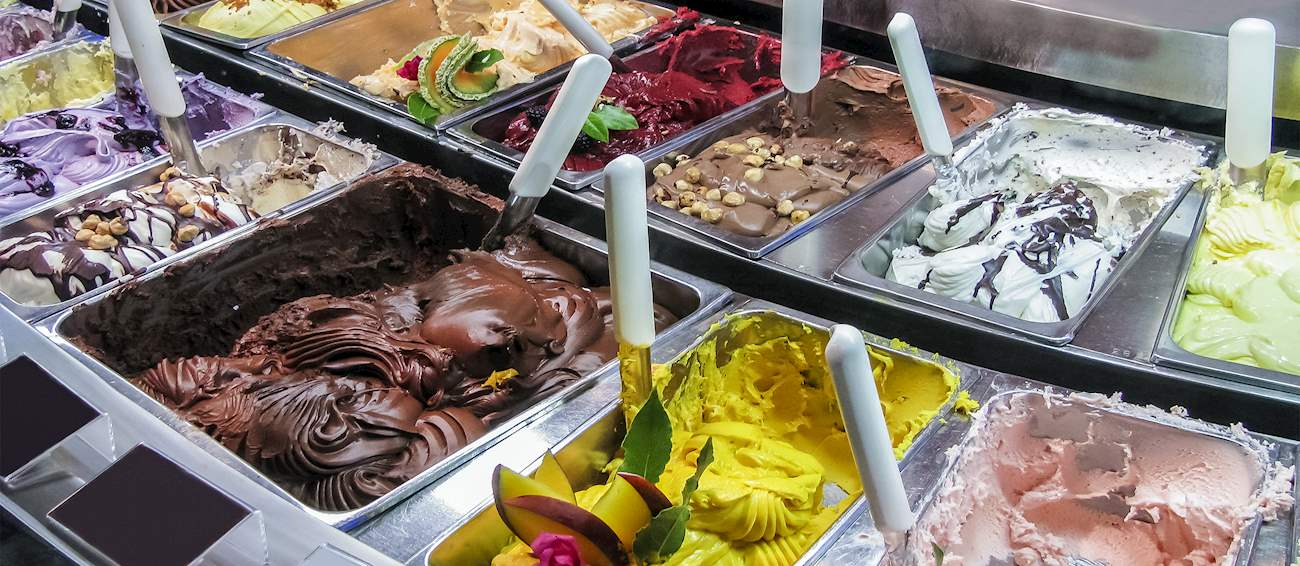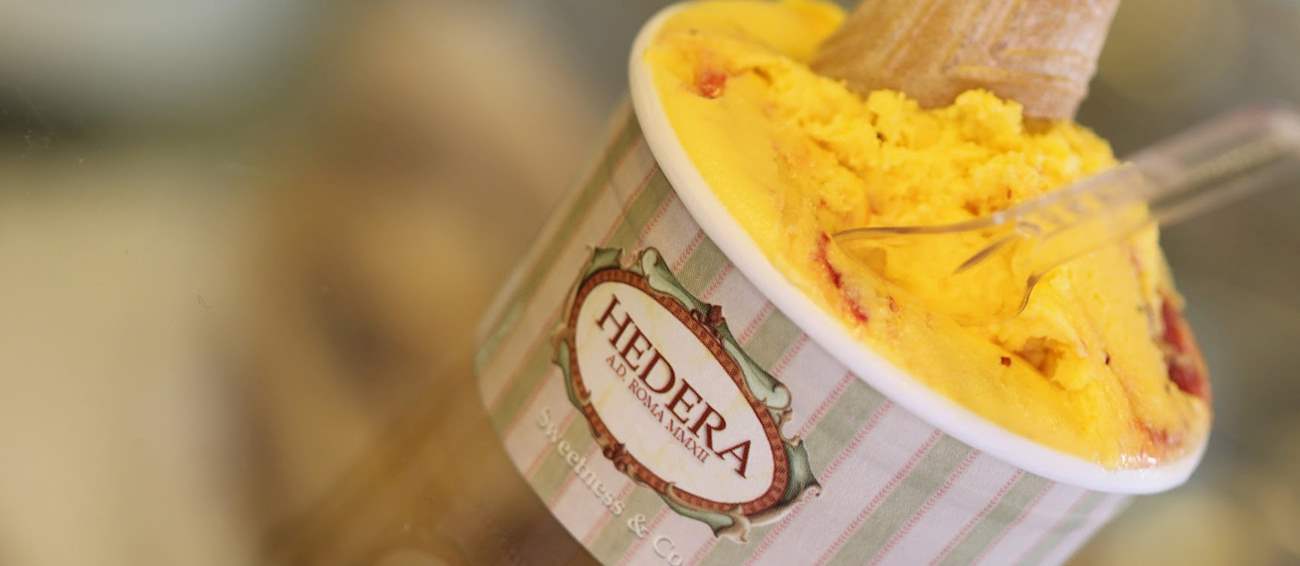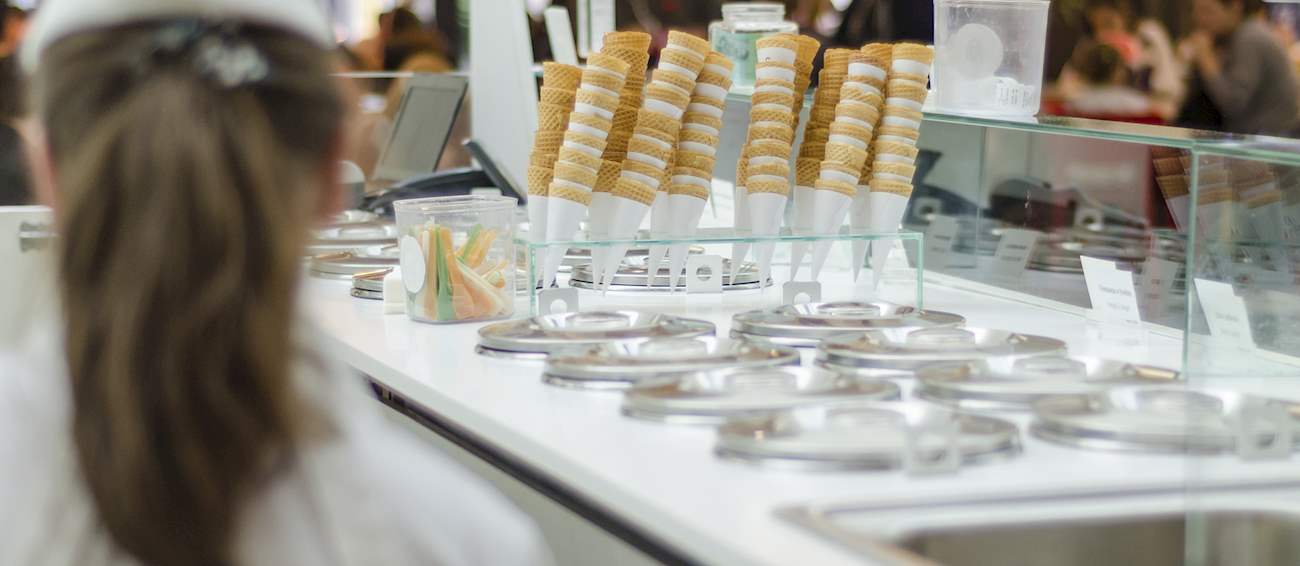Gelato
(Italian-style Ice-cream)
This traditional dessert is often referred to as Italian-style ice cream, however, there are distinct differences between the two. As with ice cream, the base for gelato is made with milk, cream, eggs, and sugar, to which fruit purees, nuts, fruit, or other various flavorings are later added.
However, what differentiates gelato from ice cream is the lower percentage of fat and the slow mixing process. These two factors result in less air being added to the base, giving gelato a denser texture and making its flavors more concentrated. Due to its thickness, gelato is usually stored at a lower temperature than traditional ice cream in order to provide the perfect level of creaminess and a silky finish, the essential characteristics of every gelato.
Undoubtedly, this frozen treat is an authentic Italian creation, and even though it is typically associated with Sicily, the creator of the first authentic gelato is believed to be alchemist Cosimo Ruggieri, who resided in Florence during the reign of Catherine de' Medici. Read more
However, it was Sicilian native Francesco Procopio Cutò who brought the tradition of preparing gelato to Paris and began selling it to the middle-class, and this affordable dessert soon became hugely popular. Gelato was also brought to North America by Italian immigrants, where it has also become a household name.
Traditionally, Italian gelato is not scooped, but rather spread onto cones and into cups with a flat spatula. The choice of flavors is limitless, including the standard fruit, vanilla, or chocolate, as well as some daring modern versions including oriental ingredients and spices.
To this day, this frozen delicacy remains one of the most famous Italian culinary inventions.






